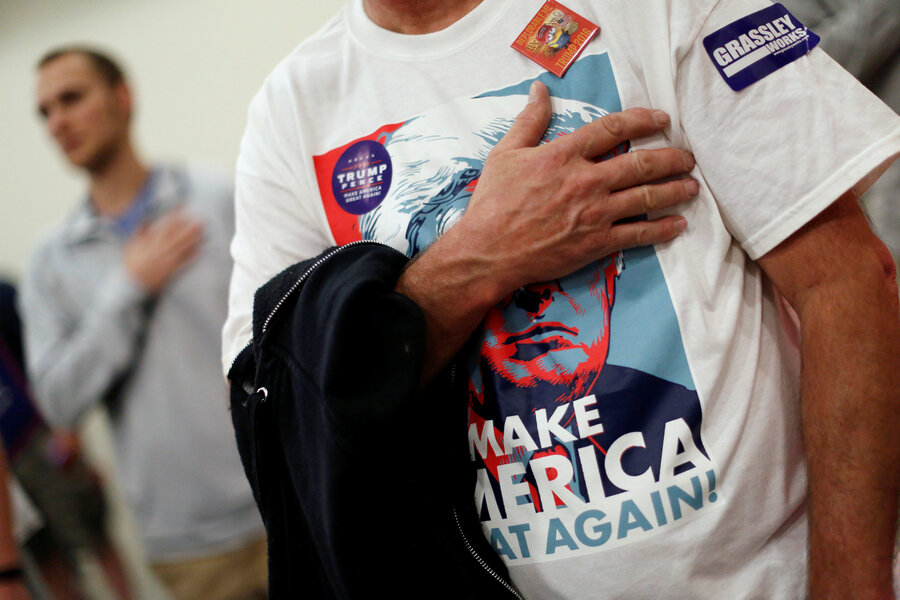Could Iowa, long a blue state, actually go for Trump?
Loading...
A new Quinnipiac poll of likely voters in four states released on Thursday finds that Democratic presidential nominee Hillary Clinton and Republican presidential nominee Donald Trump in a virtual tie in the state of Iowa, with each candidate getting 44 percent of the vote.
Iowa has only voted red once since Ronald Reagan. In 2004, George W. Bush edged out a victory with a margin of 10,000 out of more than 1.5 million votes. In recent years, however, the state has been leaning more Republican and Mr. Trump's economic message rings true for many Iowans who have struggled as manufacturing and labor-related jobs have dwindled.
Still, this year, Mrs. Clinton has made gains in traditionally red states – pulling to within a point of Trump in Georgia and expanding on her lead in North Carolina and Virginia, in a reflection of Trump’s waning favorability in those places.
"It's clear that Donald Trump has not worn well on the voters of these four key states. Only an average of about 35 percent of likely voters in them have a favorable opinion of Trump, and more than half say they have an unfavorable view of him," said Peter A. Brown, assistant director of the Quinnipiac University Poll.
"Secretary Clinton's favorability numbers are only slightly better – in the low to mid-40s – but that difference in favorability helps her in the horse race."
The numbers in Iowa come a few weeks after a Des Moines Register/Mediacom Iowa Poll found Trump maintaining a four-point lead in the state even as many other states showed him slipping. Iowa has the highest proportion of white, non-college-educated voters of any state, and as in much of the country, the fortunes of that group have declined in recent years.
"Every single recession bounces us down just a little bit lower," Iowa State University economist David Swenson told NPR in September. "We've only recovered about half of the jobs we lost before the recession. And so you very well may have well-distributed economic anxiety among a relatively large fraction of the state's workforce."
One factor, says Andrew Green, a political scientist at Central College in Pella, Iowa, is the decline of manufacturing. That sector is the largest employer in the state.
"In rural Iowa where manufacturing plants and labor-related jobs have been drying up, communities lack a lot of economic opportunity," he tells The Christian Science Monitor. "Those folks would’ve been core constituents of the Democratic base."
Like other states, this subset of Iowans has gone increasingly for Republican candidates at the federal level, after President Obama won their vote in 2008. But that shift has been slower than elsewhere in the country.
A focus on race and political education may only go so far in explaining voters’ behavior, says Timothy Hagle, political scientist at the University of Iowa.
"Basically, I think you have to look at other factors that are part of the equation," he tells the Monitor, particularly given the predominance of Iowans who claim no party affiliation.
A lot of it is about economics. Iowa fared a bit better than other states during and after the recession, says Dr. Hagle, but many people in the middle and lower side of the spectrum haven’t seen much of a recovery.
"People just are not happy and uneasy about the economic situation."
Dr. Green says that the trend of white working-class voters moving toward the Republican party has played out in Iowa in a way similar to that of other states.
"Iowa’s just been behind the curve," he tells the Monitor. If much of that group has turned to the Republicans, he says, it’s because of Democrats’ failure to revive the economy.
"Essentially, the argument for a lot of folks is, the establishment has failed us and it’s time for us to try something new."








